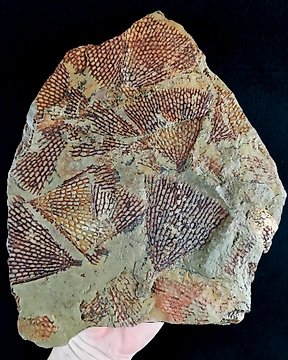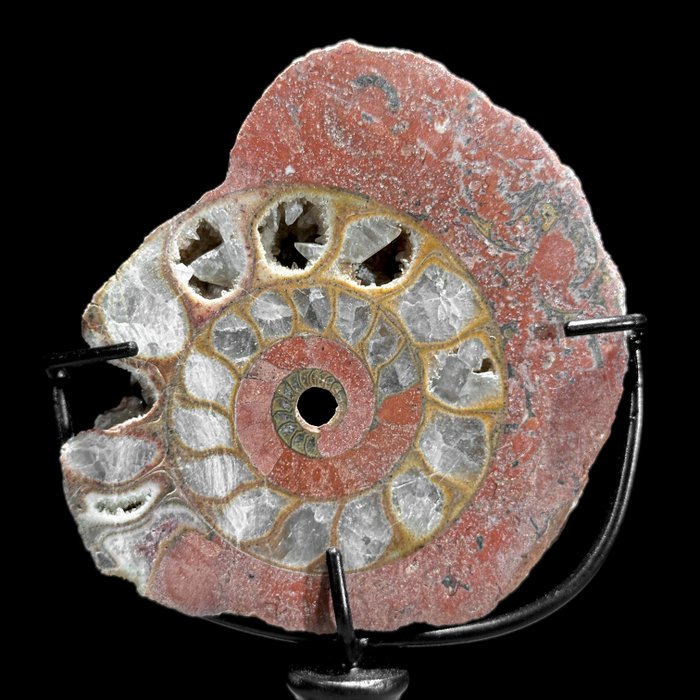
Espectacular graptolito con preservación extraordinaria!!! - Animal fosilizado - Araneograptus murrayi (Hall, 1865) - 23 cm - 20 cm
N.º 81389353

N.º 81389353

Ammonoids are a group of extinct marine mollusc animals in the subclass Ammonoidea of the class Cephalopoda. These molluscs, commonly referred to as ammonites, are more closely related to living coleoids (i.e., octopuses, squid and cuttlefish) than they are to shelled nautiloids such as the living Nautilus species. The earliest ammonites appeared during the Devonian, with the last species vanishing during or soon after the Cretaceous–Paleogene extinction event.
Ammonites are excellent index fossils, and linking the rock layer in which a particular species or genus is found to specific geologic time periods is often possible. Their fossil shells usually take the form of planispirals, although some helically spiraled and nonspiraled forms (known as heteromorphs) have been found.
The name "ammonite", from which the scientific term is derived, was inspired by the spiral shape of their fossilized shells, which somewhat resemble tightly coiled rams' horns. Pliny the Elder (d. 79 AD near Pompeii) called fossils of these animals ammonis cornua ("horns of Ammon") because the Egyptian god Ammon (Amun) was typically depicted wearing rams' horns.[2] Often, the name of an ammonite genus ends in -ceras, which is from κέρας (kéras) meaning "horn".
A P P R O X I M A T E D I M E N S I O N S - including stand
Height: 14 cm
Width: 6 cm
DISCLAIMER
> Please check with your local regulations and authorities if it is allowed to bring this item into your country, prior to bidding.
> It's a natural product, small cracks or flaws can happen. Please refer to the pictures.
> The weight mentioned is including packing material.
> Please be aware these pictures have been taken in a dark studio, colors may vary depending on the environment.
THE SHIPPING
-The item will be sent with a Track & Trace code via DHL Parcel, DPD or postNl. The tracking will be updated in your Catawiki lot once your parcel has been dropped off.
-Please check regularly to avoid your parcel being returned to us, in which case the buyer will be responsible for the shipping costs of the 2nd shipment.
-For tracking to Spain and Portugal please use this link and add the tracking number from your Catawiki lot
https://clientesparcel.dhl.es/LiveTracking/Home
-WE DO NOT COMBINE SHIPPING!!!
-If you have any questions about your parcel please contact us using the Catawiki message service. We will try to reply within 3 working days.
Cómo comprar en Catawiki
1. Descubre algo especial
2. Haz la puja más alta
3. Paga de manera segura